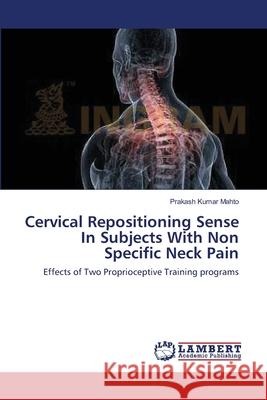Cervical Repositioning Sense In Subjects With Non Specific Neck Pain » książka
Cervical Repositioning Sense In Subjects With Non Specific Neck Pain
ISBN-13: 9783659354960 / Angielski / Miękka / 2013 / 84 str.
Chronic neck pain is a common source of disability in society. Majority of cases resulting in inability to do daily work and frequent absentism from work. Neck pain may alter proprioceptive function, and cervical repositioning sense is impaired in patients with neck pain. Proprioceptive exercise have an inhibitory effect on pain and discomfort in patients with chronic neck pain. Proprioceptive training programs are used to improve the cervical repositioning sense and eventually relieve the neck pain. This book aims to find out the effects of two different types of proprioceptive training programs, namely; Proprioceptive Neuromuscular Facilitation technique and Deep Cervical Flexors strengthening on subjects with chronic non specific neck pain. The analysis sheds some light on advanced methods used to overcome neck pain and provides evidence for the newer clinical techniques.
Chronic neck pain is a common source of disability in society. Majority of cases resulting in inability to do daily work and frequent absentism from work. Neck pain may alter proprioceptive function, and cervical repositioning sense is impaired in patients with neck pain. Proprioceptive exercise have an inhibitory effect on pain and discomfort in patients with chronic neck pain. Proprioceptive training programs are used to improve the cervical repositioning sense and eventually relieve the neck pain. This book aims to find out the effects of two different types of proprioceptive training programs, namely; Proprioceptive Neuromuscular Facilitation technique and Deep Cervical Flexors strengthening on subjects with chronic non specific neck pain. The analysis sheds some light on advanced methods used to overcome neck pain and provides evidence for the newer clinical techniques.











